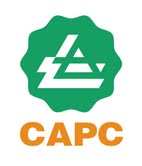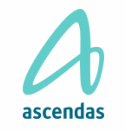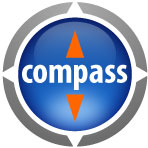Customized
We at Compass Corporate Solutions see each client as an individual with specific needs and goals. Therefore all of our corporate solutions and training programs are customized to fit each organization!
We customize our training in two main areas: Content and Delivery
Customized Content: Every training program starts by meeting with the client and identifying clear goals. Once agreed that one of our training programs fits the objectives of the client, then the customization of training material begins. Company culture, training language, linguistic level, and student experience are all taken into consideration to select the best material to reach a high level of trainee-trainer interaction and retention of course material. While our core principles remain consistent, customization is about choosing the approach that best complements those principles while ultimately reaching the clients’ training objectives.
Customized Delivery: We understand that every organization has different time constraints at different periods in the fiscal year. Due to the modular design of compass training programs there is flexibility regarding how to package each corporate training program to suit tight schedules. Additionally with such a breath and depth of professional trainers across the Asia-PAC region, Compass ensures your organization’s training needs are met consistently, completely, and delivered in your language of choice!
Interactive

Compass has followed academic researchers and leading-edge learning organizations that have long been pointing the way to more effective soft skills training approaches. According to the Chartered Institute of Personnel and Development (CIPD), soft skills are best taught by providing five key elements: Exposure, Practice, Feedback, Reflection, Personal Experience.
Based on that model, Compass ensures all of its training is highly interactive. To ensure maximum interaction we use a variety of multimedia during our workshops. Based on the fact that people learn best by doing we also ensure key points are supported by total physical response based activity as well as practice sessions. Total physical response is an innovative and effective learning method that involves the students auditory, visual, and motor skills to learn a key point. Using all these faculties simultaneously has been proven to be the most effective means to attain maximum learning retention. To further ensure maximum interaction Compass training programs use a two facilitator approach. That means double the experience, energy and feedback. Additionally we use technology and social media tools so that learners can share feedback, reflections, and personal experiences.
Measurable
 Companies and government agencies spend billions on soft skills training and must be able to track the effectiveness. But because the benefits of mastering a soft skill may often be intangible or qualitative, organizations struggle to find metrics to quantify value—particularly in monetary terms. We solve this problem by taking a methodological approach to soft skills training and from the start take two important steps: First, specify the desired outcomes for the learners, both tangible and intangible. Second, decide what metrics for those outcomes will be used and what level of precision is needed to track these results. For example, if the goal is to have all of your customer call center service representatives take an online course to learn conflict resolution skills, your desired outcome may be very specific: fewer calls will need to be escalated to a supervisor. Here the metrics are easy to track and can easily have a real dollar value attached.
Companies and government agencies spend billions on soft skills training and must be able to track the effectiveness. But because the benefits of mastering a soft skill may often be intangible or qualitative, organizations struggle to find metrics to quantify value—particularly in monetary terms. We solve this problem by taking a methodological approach to soft skills training and from the start take two important steps: First, specify the desired outcomes for the learners, both tangible and intangible. Second, decide what metrics for those outcomes will be used and what level of precision is needed to track these results. For example, if the goal is to have all of your customer call center service representatives take an online course to learn conflict resolution skills, your desired outcome may be very specific: fewer calls will need to be escalated to a supervisor. Here the metrics are easy to track and can easily have a real dollar value attached.
Not all soft skills training programs, however, can be tracked quite so concretely. For example, providing new managers with leadership training may add real value to your organization in the form of happier, more productive teams and employees, but it’s difficult to determine the precise monetary value of this outcome. For these less assessable outcomes, you can still establish guidelines to help you demonstrate value. These can include: Identifying indicators, such as fewer employee sick days, that suggest team members’ motivation levels have improved Collecting feedback in the form of peer reviews, self-evaluations, or attitude measures that can demonstrate positive results from the training. Measuring progress is about establishing a baseline for an employee’s skill level and then tracking over time how that person grows from that baseline. We make sure any training we do has that baseline!












